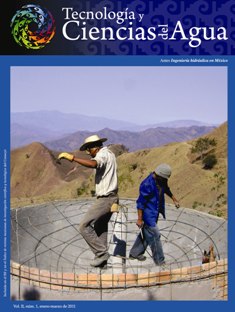Estimation of hydraulic parameters in silty soils using different pedotransfer functions
Keywords:
silty soils, hydraulic parameter, pedotransfer functions, flatlands of ArgentinaAbstract
This paper presents different procedures that have been used to estimate hydraulic properties of silt soils, representative of a sector of the Argentinean flatlands. Grain size, and physicochemical information of soil maps printed by the National Agriculture Technology Institute (INTA) were used. Pedotransfer functions (PTF) included in the SOILPAR codes (Acutis and Donatelli, 2003) and Rosetta (Schaap et al., 1999) together with empirical relationships proposed by other authors were used. For the set of 136 analyzed samples of soils, the application of the procedures showed an important dispersion of results. Consequently, the PTF applied must be used with caution, and the compatibilities between the studied soil samples and those that were used originally in the proposed equations must be analyzed. The average parameters estimated in the Ludueña basin (Santa Fe, Argentina) were compared with values obtained by calibration of a hydrologic mathematical model. The results showed that the Rosetta code with complete information (textural composition, bulk density and two points of the retention curve) had better prediction of hydraulic parameters than the other methods. The formulations of Saxton et al. (1986) for saturated hydraulic conductivity and Wosten et al. (1999) for van Genuchten's parameter alpha can be alternatively used to the Rosetta model. The results reached to date are promissory, and validate the methodology for its application in other regional river basins.Downloads
Published
How to Cite
Issue
Section
License

This work is licensed under a Creative Commons Attribution-NonCommercial-ShareAlike 4.0 International License.
By Instituto Mexicano de Tecnología del Agua is distributed under a Creative Commons Attribution-NonCommercial-ShareAlike 4.0 International License. Based on a work at https://www.revistatyca.org.mx/. Permissions beyond what is covered by this license can be found in Editorial Policy.









